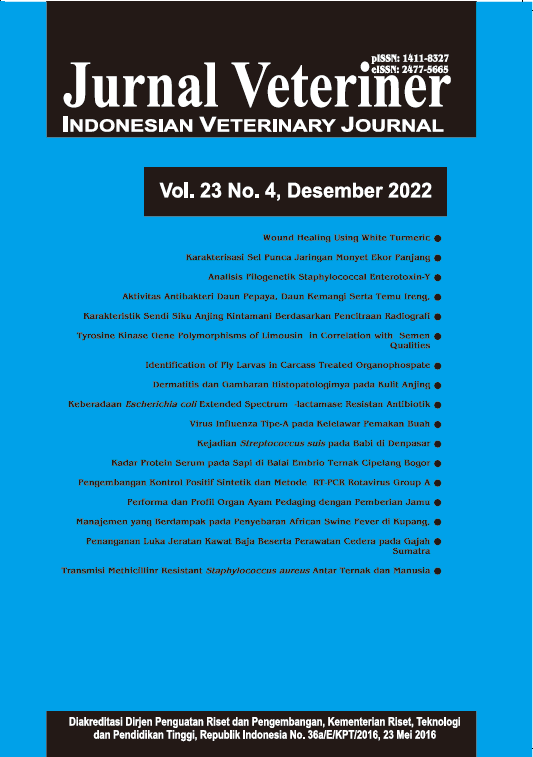Kajian Pustaka: Potensi Transmisi Methicillinr Resistant Staphylococcus aureus Antar Ternak dan Manusia
POTENTIAL TRANSMISSION OF METHICILLIN-RESISTANT STAPHYLOCOCCUS AUREUS (MRSA) BETWEEN LIVESTOCK ANIMALS AND HUMANS: A REVIEW ARTICLE
Abstract
Methicillin-resistant Staphylococcus aureus (MRSA) is a multidrug-resistant strain of S. aureus bacteria with a mortality rate range from 30 to 50% in humans. The decreased sensitivity of MRSA to vancomycin, the drug of choice for MRSA infections, makes MRSA a priority of antimicrobial-resistant pathogen for research and therapeutic development. Transmission of MRSA between animals and humans was first to be reported in the early 1970s, followed by the discovery of livestock-associated MRSA (LA-MRSA) ST-398 in 2003. Veterinarians, ranchers, and dairy farmers had higher rates of MRSA colonization due to their close relationship with livestock. The need to identify the potential transmission routes, risk factors that can cause MRSA transmission between livestock and humans, and its prevention is the basis for this research. This research was conducted by analyzing related literature obtained from online databases such as Google Scholar and PubMed, based on predetermined research criteria. Reported potential transmission routes include direct contact and airborne transmission. Several risk factors such as direct contact with livestock, antibiotic use as growth promoters, and living in areas close to livestock areas can cause MRSA transmission between livestock and humans. The use of masks, the application of good hygiene and sanitation, and screening for MRSA colonization in livestock and humans are some of the efforts that could prevent MRSA transmission between livestock and humans.



















